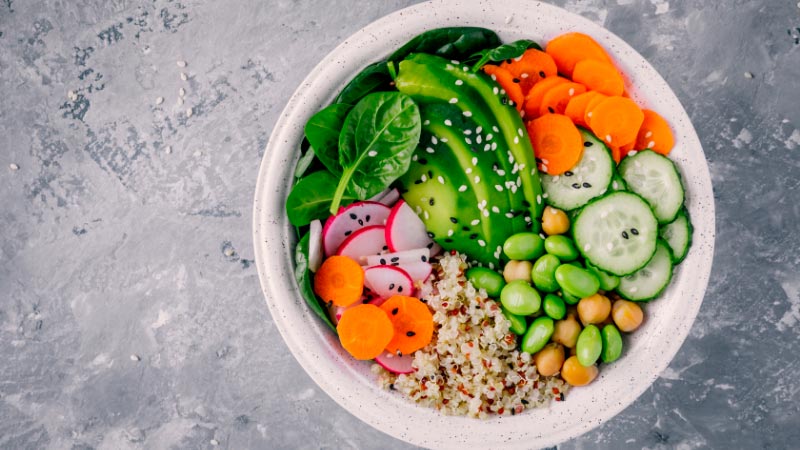One of the situations that vegans usually encounter, especially beginners, is the outdated information about the need to combine cereals with some legumes to obtain a dish with complete proteins, that is to say, with the essential and non-essential amino acids in their totality, since supposedly otherwise we would be in nutritional deficit. To tell you that the last scientific investigations on the matter endorse that this is no longer necessary, reason why it becomes a belief that does not have scientific endorsement. It has been verified that our organism takes the amino acids of the proteins that we ingest every day and it is using them according to necessity, that is to say if to the vegetables they lack an amino acid, it is supplemented when we eat some food that contains it without need to make juggling in the kitchen to obtain a plate in which exist each and every one of the amino acids.
It is necessary to keep in mind that what we must do is to have a balanced, nutritious and correct diet. I know that this leads us to be able to read a lot of information, but I recommend that you always contrast it with information with updated scientific support because there is a lot of information on nutrition and food that has fallen into disuse.
Our body is able to pick up and reserve amino acids as they are ingested regardless of the food we eat at that time. This is the reason why you should not worry about mixing and worry about better balance and have a diet with fresh, natural products, do not abuse the prefabricated, and if possible, use organic foods.
There are 20 proteinogenic amino acids, that is to say, those that our body uses to build proteins, of which 8 are considered essential since they must be taken directly from the diet. Our body can build the remaining 12 from these 8 essential ones: leucine, lysine, tryptophan, valine, threonine, phenylalanine, methionine and isoleucine.
All essential amino acids are present in plant foods, none of them are present exclusively in foods of animal origin. The incorrect information that is often passed on is that one or more of these amino acids are missing in plant foods. In reality, they are all present, but simply in some foods some of the amino acids are present in less than what is considered optimal.
These amino acids present in more “scarce” quantities are not always the same, they differ among the various plant foods; therefore, in general, a one-day 100% plant-based diet contains all the essential amino acids in optimal quantities, and this is more than enough. There is no need for any particular combination within the meal, as we will see later when the amino acid group concept is introduced.
The essential amino acid present in a given food in minor amounts is called “limiting amino acid”. In fact, it means that the amount is not optimal compared to the reference standard proposed in 1991 by WHO/FAO/UN. The limiting amino acid varies according to the food under consideration:
- Cereals and nuts: the limiting amino acid is lysine (also tryptophan in corn).
- Legumes: methionine is the limiting amino acid.
- Vegetables: the limiting amino acid varies according to the type of vegetable.
Some plant foods do not have any limiting amino acids: in them all essential amino acids are present in optimal amounts:
- Pseudocereals: amaranth, quinoa, buckwheat.
- Soybeans.
- Some vegetables, for example, spinach. Such vegetables are useful, for example, in low-calorie diets, because they are low in calories, but rich in protein.
Source: Academy of Nutrition and Dietetics: Vegetarian Diets. J Acad Nutr Diet. 2016 Dec; 116 (12): 1970-1980.
Is it necessary to make the misnamed complete proteins in vegan dishes?
By Dr. Freddy Acevedo Ruiz
Dir. Biocentro Acevedo, Integrative Medicine.

